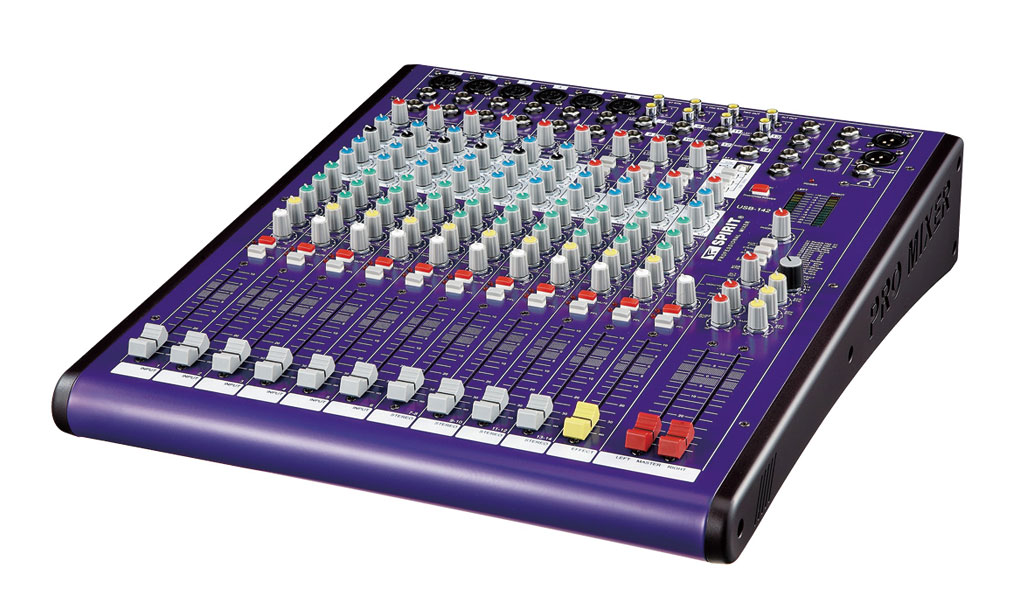

There are countless variations of interfaces and mixers. A big cause of confusion is just the sheer variety of options available. When you’re just starting out, it’s not uncommon to feel out of your depth.
Can a mixer replace an audio interface?. Do I need a mixer if I have an audio interface?. Is a mixer the same as an audio interface?. Which is the best setup for livestreaming?. Which is the best setup for home studio recording?. I also have a USB mic and/or a USB MIDI keyboard. What is the difference between an analog and USB mixer?. 
 Is a USB mixer the same as an audio interface?. Your Frequently Asked Questions about Audio Interfaces and Mixers. Audio Interface Vs Mixer – Which Is Right for You?. More Things to Consider – and Some Technical Terms. What Do You Want to Achieve in YOUR Home Recording Studio?. Multichannel Audio Recording via a USB Mixer. Audio Interface vs Mixer – Video Tutorial. We're always looking to expand our arsenal. Use Dolby On to record video and your multi-channel audio to get optimized sound and avoid tedious syncing within video editing or livestreaming software. Use the audio outputs of your mixer or USB recording interface to send a stereo output into your phone's input. Take advantage of Dolby On's processing to give your tracks automatic EQ and "mastering" effects, or use Dolby On as a livestreaming encoder for your multichannel audio mix. Focusrite Scarlett range).Īndroid: An Android use case example would be to plug an electric or bass guitar in to an iRig UA.įor: inputting more complex multichannel mixes into Dolby On. IOS: An example use case for iOS devices would be plugging an Apple Lightning connector to a USB 3 camera adapter with a USB bus-powered interface (e.g. Scarlett Focusrite Interface range (for both iOS and Android devices). iRig Pro (for both iOS and Android devices). iRig 2 (for both iOS and Android devices). Apple AV Camera Adaptor (for iOS devices). The app takes advantage of the high-quality microphones built into your phone or mobile device, but it can also improve the quality of sound being fed into the device via external sources like Lightning/USB-C microphones, mobile recording interfaces, and any other type of direct audio-input.īelow are some different use cases for external devices, along with some recommended gear that plays nice with Dolby On.įor: capturing directional sounds like interviews, quiet instruments, or specific sound sourcesįor: directly recording instruments, non-phone compatible microphones, or other input sources right into your phone Dolby On is a great tool for your existing creative process and workflow.
Is a USB mixer the same as an audio interface?. Your Frequently Asked Questions about Audio Interfaces and Mixers. Audio Interface Vs Mixer – Which Is Right for You?. More Things to Consider – and Some Technical Terms. What Do You Want to Achieve in YOUR Home Recording Studio?. Multichannel Audio Recording via a USB Mixer. Audio Interface vs Mixer – Video Tutorial. We're always looking to expand our arsenal. Use Dolby On to record video and your multi-channel audio to get optimized sound and avoid tedious syncing within video editing or livestreaming software. Use the audio outputs of your mixer or USB recording interface to send a stereo output into your phone's input. Take advantage of Dolby On's processing to give your tracks automatic EQ and "mastering" effects, or use Dolby On as a livestreaming encoder for your multichannel audio mix. Focusrite Scarlett range).Īndroid: An Android use case example would be to plug an electric or bass guitar in to an iRig UA.įor: inputting more complex multichannel mixes into Dolby On. IOS: An example use case for iOS devices would be plugging an Apple Lightning connector to a USB 3 camera adapter with a USB bus-powered interface (e.g. Scarlett Focusrite Interface range (for both iOS and Android devices). iRig Pro (for both iOS and Android devices). iRig 2 (for both iOS and Android devices). Apple AV Camera Adaptor (for iOS devices). The app takes advantage of the high-quality microphones built into your phone or mobile device, but it can also improve the quality of sound being fed into the device via external sources like Lightning/USB-C microphones, mobile recording interfaces, and any other type of direct audio-input.īelow are some different use cases for external devices, along with some recommended gear that plays nice with Dolby On.įor: capturing directional sounds like interviews, quiet instruments, or specific sound sourcesįor: directly recording instruments, non-phone compatible microphones, or other input sources right into your phone Dolby On is a great tool for your existing creative process and workflow.










